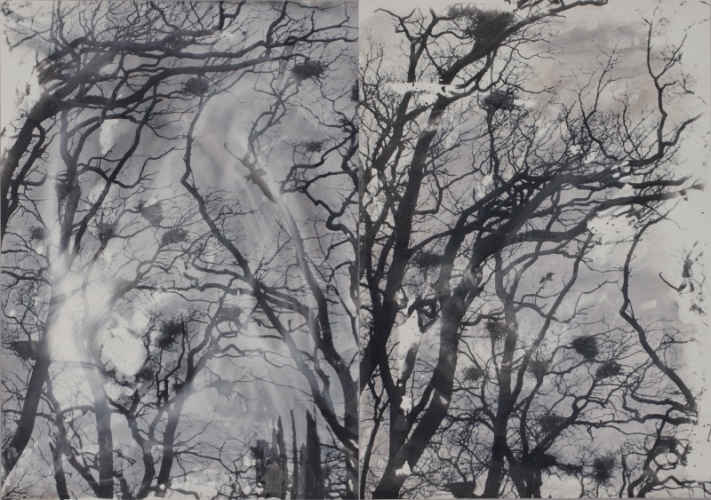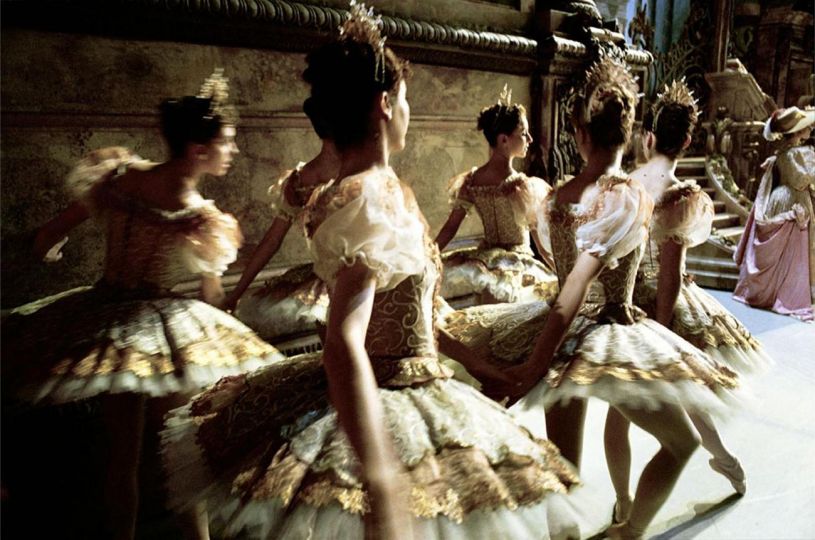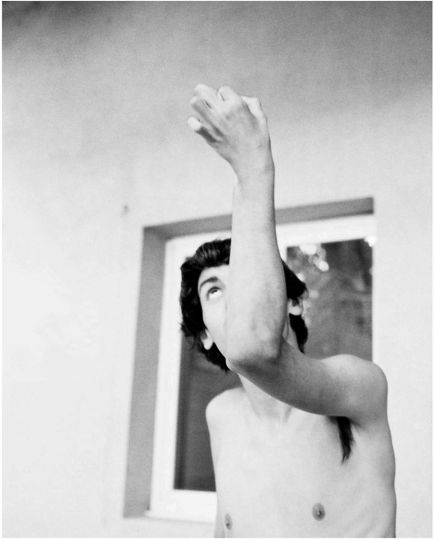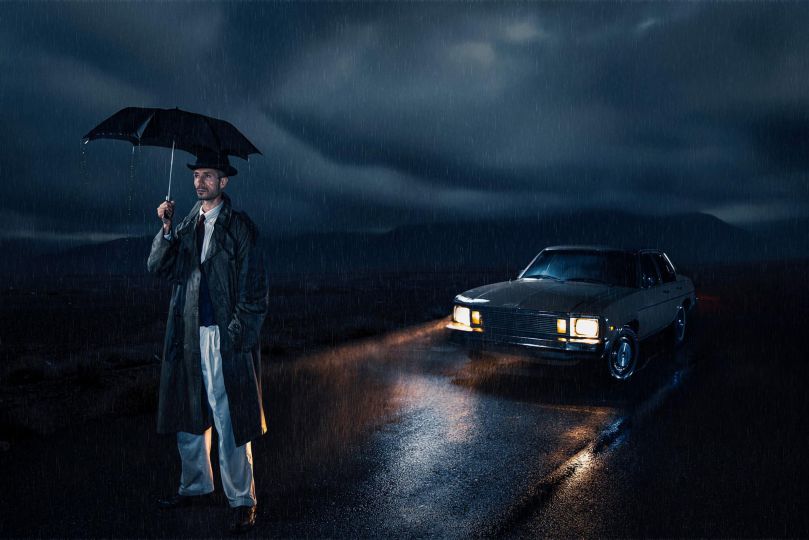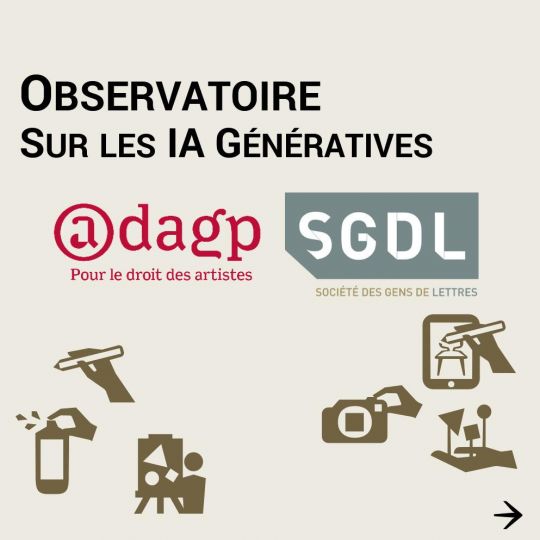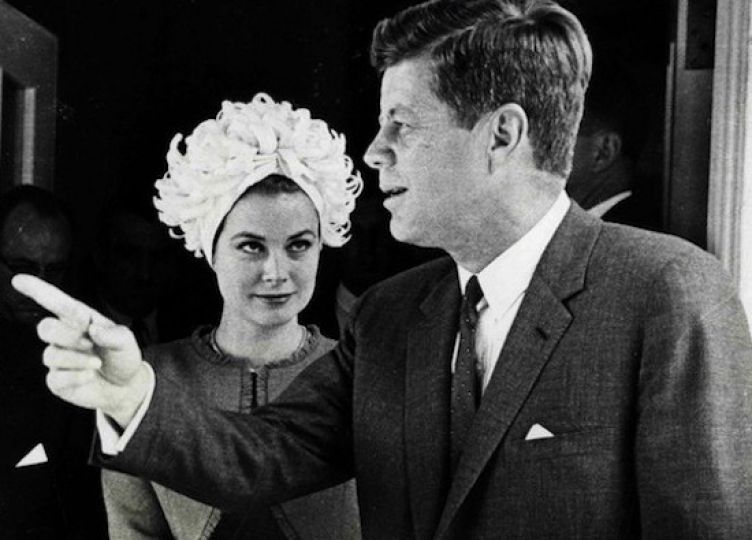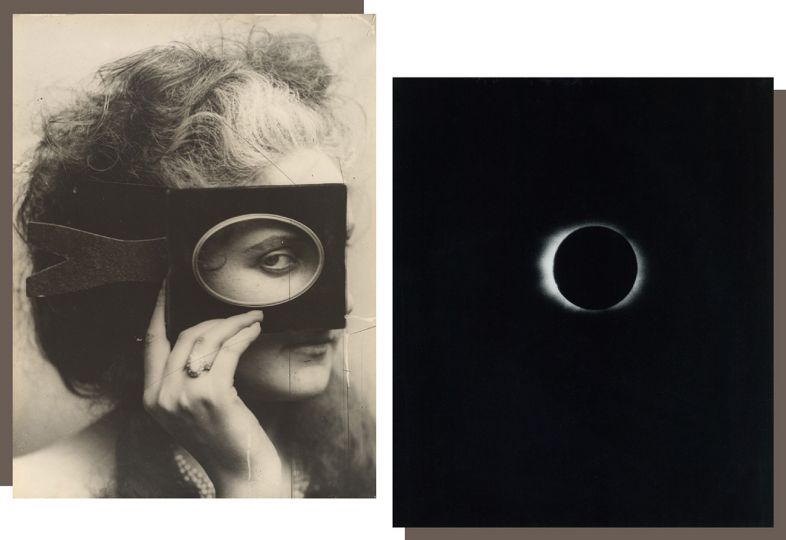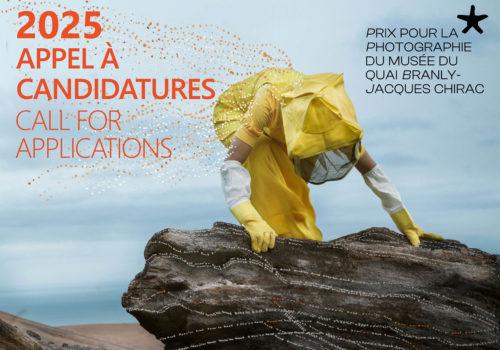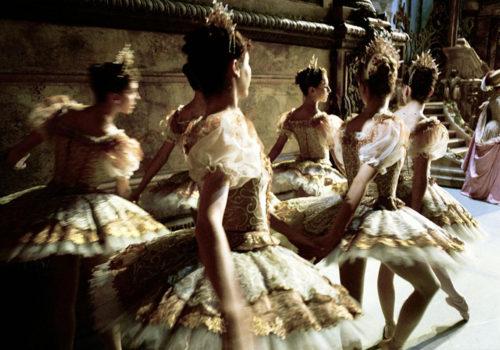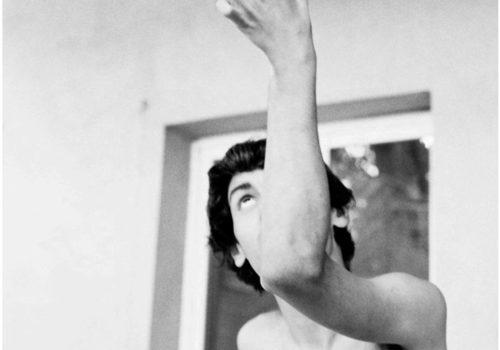Wildniß written with an SZ – given the artist’s name, intention is, of course, swiftly suspected. And no sooner has one tripped over this stumbling block than one is thinking about the theme WILDNIS, Wilderness. Today, in the Anthropocene era, the question arises whether a nature untouched by man, a genuine wilderness, even still exists? Or whether all areas of wilderness are not actually anthropogenically influenced cultivated landscapes? According to National Geographic, in 2008 just 17% of the Earth’s ice-free surface area (including the oceans) was without any sign of human activity.
In Dörte Eißfeldt’s series Redwood, Grizzly and Fog Drip the subject is those areas of the United States where redwood trees can still be encountered. The redwood (Sequoiadendron giganteum) can reach a growth height of up to 95 metres, a trunk diameter at the base of up to 17 metres and a weight of 1500 tonnes. Though the coastal redwood (Sequoia sempervirens) is less massive, it can, for all that, grow to 115 metres tall. The oldest living specimens are more than 2500 years old. Redwoods were already in existence 250 million years ago, so long before the dinosaurs became extinct. By the 1960s, within 100 years, around 90% of stocks had been extensively cut down for the construction of houses, railroad sleepers, ship’s planks and mines. Today, just 3% of the original stock of these gigantic trees still exists, and even this stock is not entirely protected.
Dörte Eißfeldt’s works in these series were created in 2013 in the Sierra Nevada as well as in the North Californian Redwood National Parks near the coast on the border with Oregon. Her concern was to capture the particular impression which these “monarchs of the forest” leave behind in a fitting artistic expression. For she has always dealt with the issue of the image’s qualities. “My aim is to turn the photographic, the medium as process, into an object. I want the photographic image to take a portrait of itself, so to speak.” (Dörte Eißfeldt)

